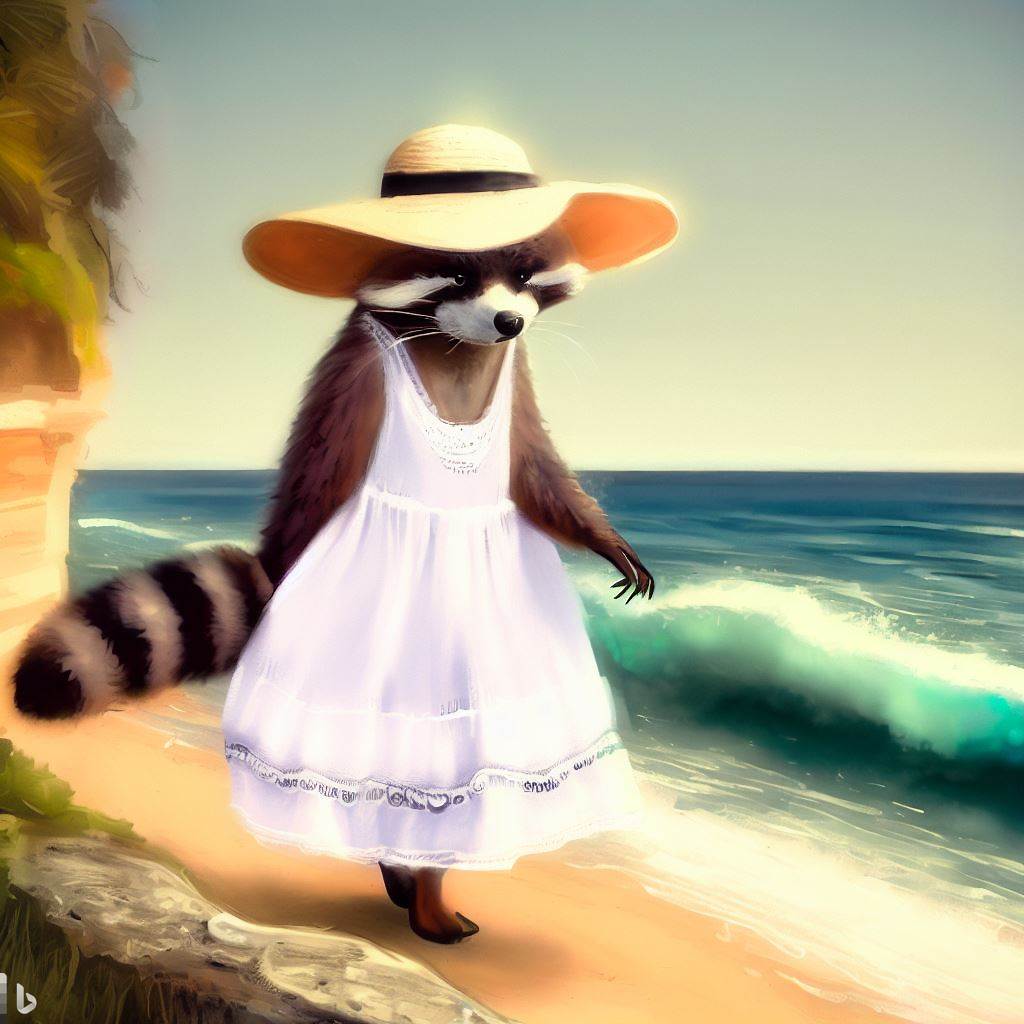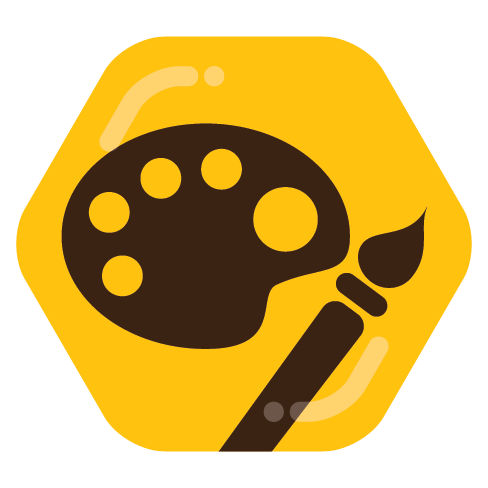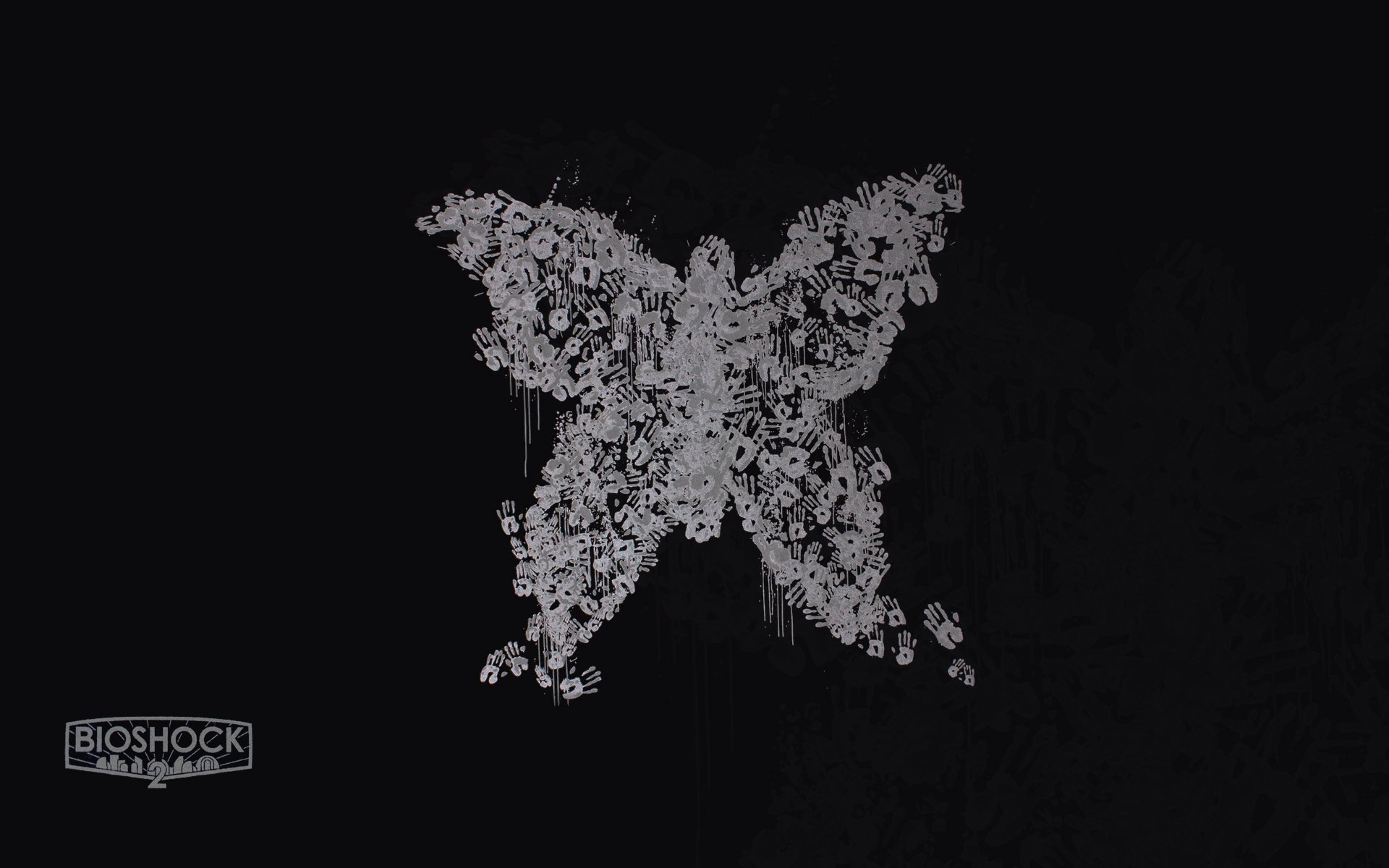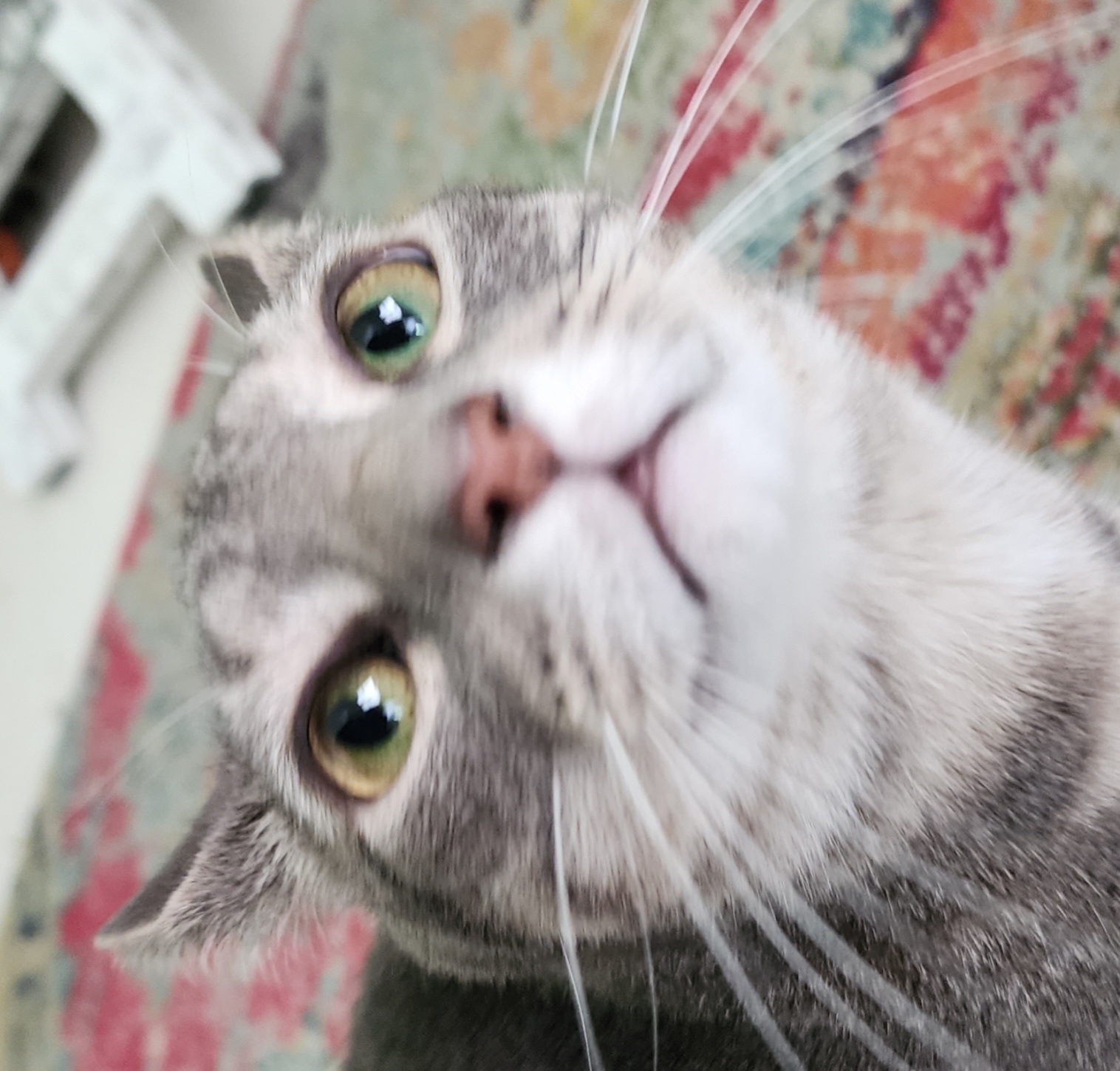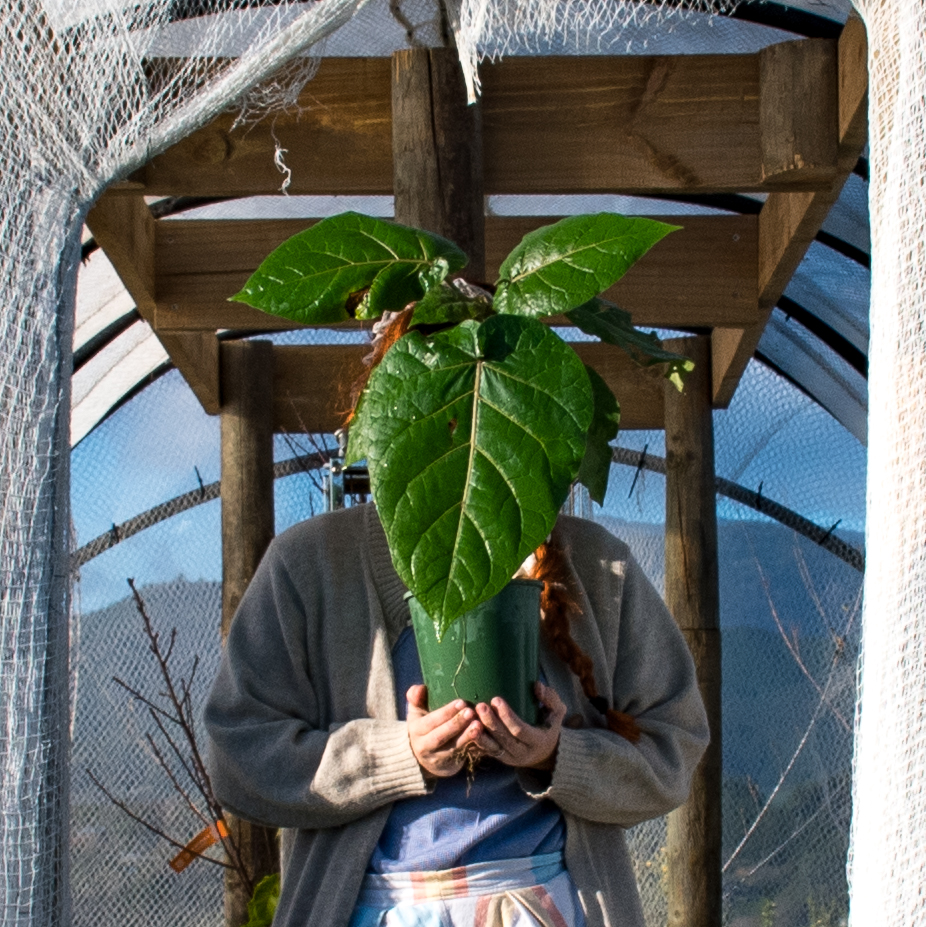I’m using a cheap projector off BangGood on top of a camera tripod. There’s a bit of set-up time every time I want to cut some fabric since I can’t mount it to the ceiling but it’s still way quicker than printing, taping, and cutting pdf patterns!
This cute raccoon brushed French terry was turned into a Tilly and the Buttons Billie Sweater.
Did you buy a projector just for this? Is the cost justified?
Yes, I did. It was €150 from Banggood. I personally feel the cost is justified because the alternative is printing hundreds of pages and taping those together, which is high in ink cost and opportunity cost (it takes a while).
However, I do primarily (almost exclusively) use digital patterns so I use the thing very often. If you also use regular paper patterns I would imagine the value might be less.
After printing and taping together several patterns before cutting out, I basically stopped buying digital sewing patterns. Life is too short. I went back to printed commercial patterns. I have found the use of projectors for this really intriguing, but my sewing closet doesn’t really have an easy/good place I can mount a projector to use. I can understand the appeal, though! I think that if I have to haul it out of storage every time, I’ll just never use it.
How do you make sure it’s not distorted, and also the right size? Seems like a nice use for a projector
To get the right size, it’s a matter of selecting the right layer on the pdf. I usually have to make adjustments due to my waist-hip ratio and I use Inkscape to edit the files. A lot of indie pattern makers have started supporting projector friendly files. In terms of distortion, you always start with a calibration phase where you project a grid (usually in inches) and adjust pdf zoom & project settings (in case of skew) until the grid matches your physical measuring tool (mat, ruler,…). Then it’s a matter of noting down the zoom percentage and opening any pattern pdf at that same percentage. These files often come with a small little grid on the side as well for a quick double check.
I don’t sew. Just want to say this is brilliant.
I hope to one day have a wee studio in the garden where I will actually have the room to have a projector and cutting space ☺️ right now i cut on the floor and sew on my itty-bitty table or teeny-weeny countertops in my tiny house 😂
I send my PDFs off to be printed, but I really like this idea. The main difference I might do if I go this route is projecting onto swedish tracing paper instead of directly onto the fabric. I just know my fabric would shift on me with my luck, but I could trace a projection.
I tried looking into the printer/plotter services but sadly it’s very expensive in my country, which is why I started on the whole projector adventure in the first place.
Fabric shifting can indeed be an issue. For this stretchy knit I used just two weights but for things that are more slippery, I put weights all over to keep it as flat as possible. Using a rotary cutter also helps a lot.If you don’t mind me asking, what’s the resolution on your projector?
I’m looking for something similar and trying to get an idea of what resolution this use might require
It’s a native 1080p. If you’re on Facebook, there’s a group called “Projectors for sewing” that has a lot of information, they recommend a min. res of 720p. In the US there’s a big market of second hand projectors but it’s trickier in Europe, which is why I ordered a cheaper new one (Wanbo T2 Max).
